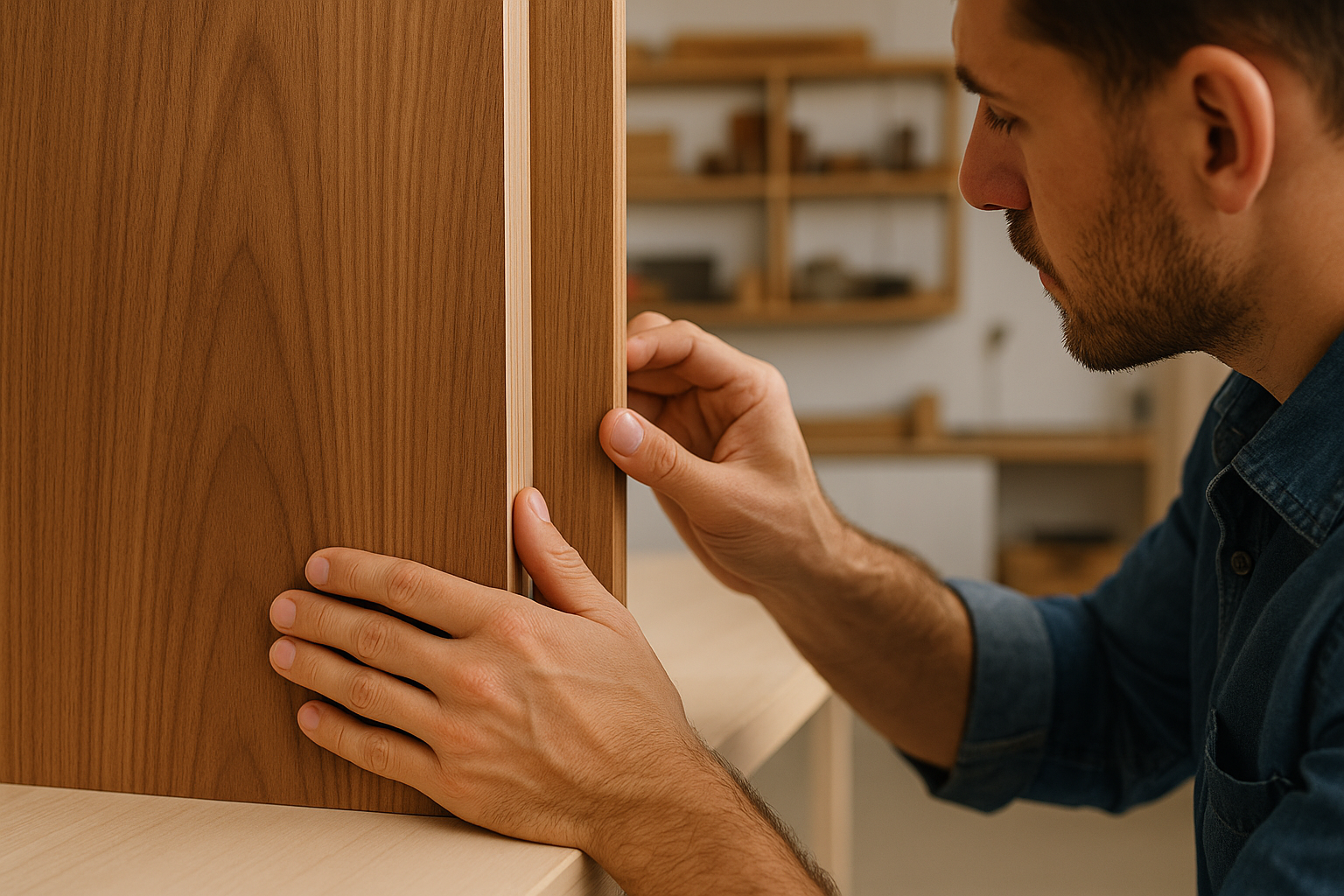Why Are Edge Treatments Important?
When you’re working with timber veneer, the edges are just as important as the face of the panels. Raw edges, where the veneer has been cut to size, can look unfinished and expose the core material underneath. Without proper edge treatment, the veneer might also be more vulnerable to moisture, wear, and tear, especially in high-traffic areas.
Edge treatments not only protect the panel from damage but also give it a polished, professional look. They help create a seamless finish, giving your timber veneer project a high-end, cohesive appearance. Plus, they’re a key component when it comes to durability, so let’s take a closer look at the different edge treatment options available.
Common Edge Treatments for Timber Veneer Panels
- Solid Timber Edging If you’re after a traditional, high-quality finish, solid timber edging is a classic choice. This involves using a piece of solid wood—usually the same species as your veneer—along the edge of the panel. Solid timber edging gives a natural, authentic look and can be applied to all sides of your panels. It’s a great option if you want to highlight the natural beauty of timber and give your panels a sturdy, lasting finish.
- Edge Banding Edge banding is a quick and effective way to give timber veneer panels a neat, finished edge. This technique involves applying a pre-finished band of material—usually a thin veneer of wood- along the edges of the panel. Edge banding is a cost-effective method that’s ideal for both residential and commercial projects. It’s especially useful when you need to achieve a sleek, modern look or when working with more delicate veneer types that need extra protection.
How to Choose the Right Edge Treatment
Choosing the right edge treatment for your timber veneer panels depends on several factors, including the overall design of your space, the intended use of the panels, and your budget.
- Aesthetic Appeal: If you're looking for a sleek, minimalist look, edge banding or lipping may be the best choice. For a more natural, rustic finish, solid timber edging or beveling could be the way to go.
- Durability and Functionality: Consider how much wear and tear the edges will be subjected to. For high-traffic areas or furniture, solid timber edging or durable PVC lipping may offer better protection. For a more delicate finish, be mindful of potential moisture damage or scratches.
Cost and Time: Some edge treatments, like edge banding, are faster and more cost-effective, while others, like solid timber edging, require more time and effort but result in a premium finish.
The Little Details That Make a Big Impact
While edge treatments for timber veneer panels might seem like a small detail, they play a huge role in both the appearance and performance of your project. Whether you’re renovating your kitchen, designing custom furniture, or upgrading your office space, the right edge treatment can elevate your timber veneer panels and give them a polished, professional look.
Next time you're working with timber veneer, don’t overlook the edges—paying attention to this detail can make all the difference in the final outcome of your design. With the right edge treatment, your timber veneer panels will not only look great but will last longer, too!

Explore Bord Products
Our Melbourne facility produces hundreds of veneer and laminate panels daily, giving us total control over timeframes and quality.

Visit Our Showroom
Get expert advice on material selection for your project and see our entire range of veneers and laminates in person.

Specify Sustainable
We support sustainable forest management in Australia and across the globe. Look out for certified products on our website or speak to us.




